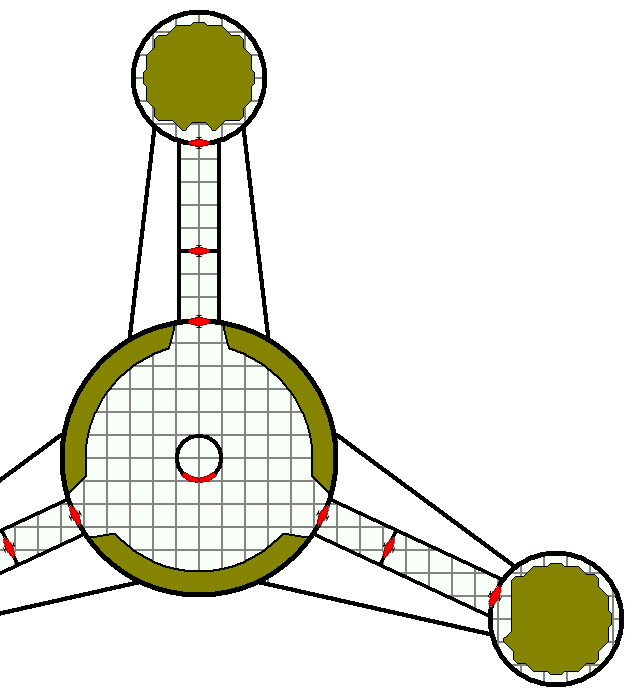Timeon Clipper
Timeon Clipper class freighter
Armed Freight Transport 
HS:7 HP:56 Powerplant: 3 Streel "Big Bang" Atomic B
ADF:3 MR:2 DCR:50 Crew:8-15
Armament: LB
Defenses: RH, MS (x1)
Communication/Detection: Subspace Radio, Radar + aux. Radar in stern
Misc: heavy armor, 2 cargo arms (1/hold)
Computer
Alarm (3), Analysis (4), Astrogation (4), Commerce (1), Computer Lockout (6), Damage Control (3), Drive (5), Industry (1), Information Storage (1), Laser Battery (1), Life Support (1); capacity:15 Maintenance (3)
Cargo Capacity: 7 (3.5 x 2 holds)
Fuel Tankage: 18 uranium pellets, 6/drive
Crew Accomodations: 2 suites (single or double occupancy), 6 cabins cabins (single or double occupancy)
Passenger Accomodations: 0
Ship's Vehicles: Workpod, Large Launch
Streel Shipbuilding designs and constructs these lower end freight haulers. Using a class:7 hull as a starting point, these freighters aren't designed for massive profits like the larger haulers may reap, but rather their faster nature allows them to enjoy hauling cargoes that need to be there quicker than the big barges can travel. Also noteworthy is the extra heavy hull armor plating invoked, allowing the Timeon Clipper to absorb damage akin to craft nearly twice the size can take. Further additions include a single laser battery to help ward off any of that damage.
Obviously anything this high in mass requires a little extra boost to propel it to standard performance levels. To this end Streel's own "Big Bang" line of class:B atomic drives offer superior thrust over the PGC "Eureka's" offered on the Pacific class freighters (eg: the SS Gullwind) with only marginally higher costs, and adding a third drive to the equation also helps retain stock ship performance. The improved efficiency of the Big Bangs along with the increased cargo capacity over the standard smaller freighters sized from class:3 to 6 hulls will maximize profit potential for those independant haulers and greater expansion potential for mid-sized firms with fleets of several ships.
These craft are meant to slip in to the market where larger craft could never operate, such as limited markets where a larger ship would burn up all the profits in her reaction chambers. Aforementioned smaller worlds no longer have to pay premium prices for goods hauled to them. With twice the room of smaller atmospheric capable haulers they will be able to flood the markets with thier own goods and take over the runs they are used on, leaving only the "absolutely positively has to be there right away" market to the smaller craft.
Few owners opt to ditch the single laser battery in favor of improved performance (thereby allowing MR:3), most freight captains enjoy some form of self defense when the nay-sayers show up looking for some free swag to lift. Massive amounts of hull integrity can go a long way in preventing unwanted boarders, but a battery weapon goes even further by adding an offense to an established defense.
Original concept by Parriah, deck plans drafted by Shadow Shack
Deck 1 - Bridge
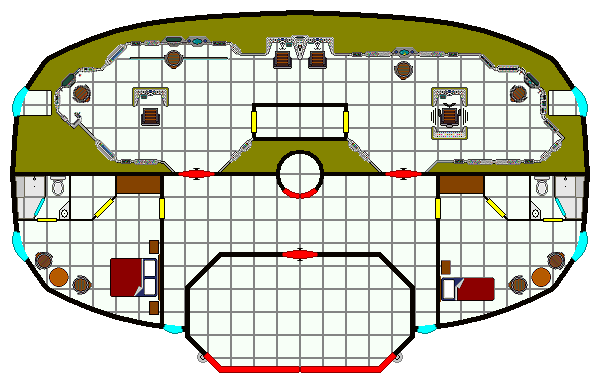
Deck 2 - Forward Crew Deck
The forward crew deck has three cabins which can be furnished for single or double occupancy. Also on the deck is a galley and lounge area, as well as the controls for the ship's laser battery. Typically the gunner will reside in one of the cabins on this deck, along with any bridge personnel not residing on the Bridge deck.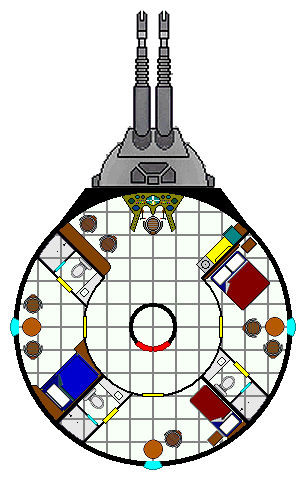
Deck 3 and 5 - Fore & Aft Holds
These twin decks depict the standard hold, each capable of storing 3.5 cargo units. The central elevator shaft has been expanded outward to accomodate a cargo arm on each level. Bay doors open on four sides of the hexagonal shaped deck for expedient cargo loading and unloading.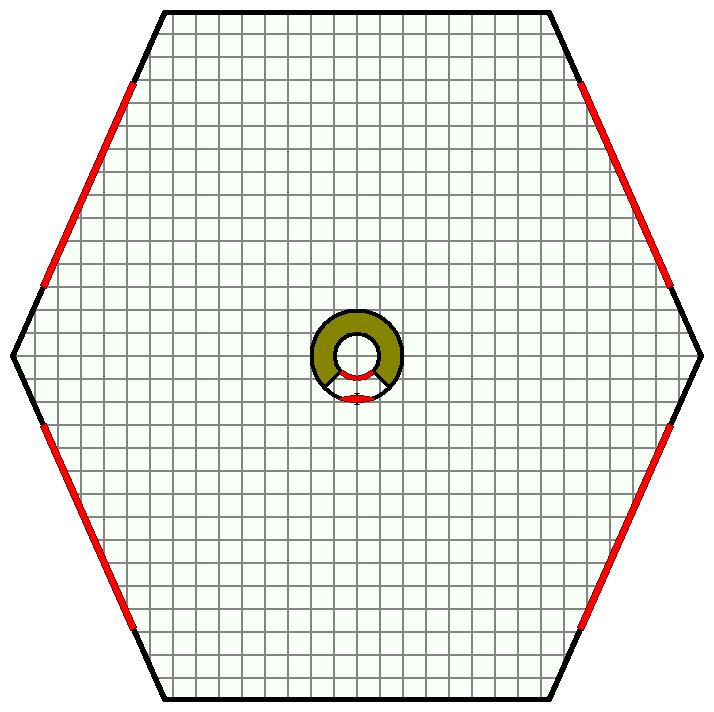
Deck 4 - Mid Crew Deck
Sandwiched between the twin cargo holds is the mid crew deck, containing three more cabins that may be furnished for single or double occupancy. A galley and lounge flank the Universal Docking Collar. Timeon Clippers that are staffed by smaller crews will typically lease these cabins out for passengers or permit security guard residence for valuable loads.
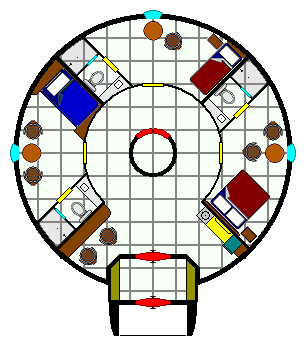
Deck 6 - Engineering
This deck represents the business end of the craft, containing an engineering station (where 50% of overhaul time is spent), water tankage and a purification plant, life support equipment, a generator and power relay station, tool shop, spacesuit lockers, and a workpod bin.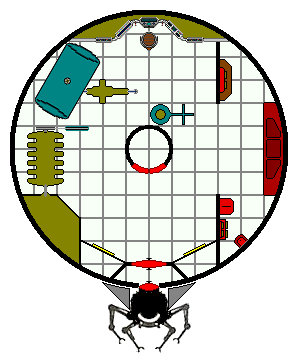
Deck 7 - Engine Room
This deck contains readout stations for each of the Clipper's atomic drives, along with airlock/decon stations and accessways to the actual drives. The remaining 50% of overhaul time is spent on this deck, and many crews typically keep a few maintenance bots here as well.